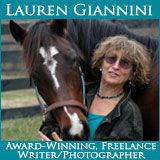 Norman Fine and myself at the Virgina Hound Show. Photo by Allison Howell.
Norman Fine and myself at the Virgina Hound Show. Photo by Allison Howell.
It’s a question that most of us in the hunt field have to face – Are my riding days over? This is a question that has been forefront of my mind for the past three years. As I have gotten closer to another surgery to add yet another set of metal bars under my skin, I have been trying to come to grips with the idea of never riding again. And that conclusion has felt like an amputation.
I started to get sick with no explanation in February 2020. The next month a little thing called a global pandemic shut down the world. And I continued to get worse without ever contracting the COVID-19 virus.
After six months of not being able to breathe even just walking around the grocery store, I finally found a physician who understood the cause of my issue. I have a birth defect of the sternum called Pectus Excavatum, or PE. This mostly affects boys, so it’s rare to happen to a girl. The deformity is a sternum that is sunken or pressed farther in the ribcage than normal. It’s the opposite of a barrel chest.
The first time I was called a “zebra” by a physician, I was insulted. It comes from a phrase that doctors use to diagnose, “When you hear hoofbeats, think horse not zebra.” Basically, it means to think of simple reasons why a person is ill. I went to the ER three times during the year of COVID in 2020, and each time I was told that they could find nothing wrong to explain my inability to breathe. They were all thinking “horse” as none of them had any experience with my “zebra” sternum.
After finding the right “zebra” friendly physician who was willing to order the correct imaging, the reason for my breathlessness for most of that year was discovered to be pleurisy. It was theorized that a lifetime of friction from the PE on my heart and lungs must have caused fluid buildup or pleurisy on both my lungs and heart that also caused both lungs to begin to collapse.
The procedure to fix PE is usually done on teenagers, so it’s considered a pediatric surgery. And here I hadn’t been a teenager in many decades. I was 49 years old when I had two metal pectus bars inserted through my ribs to punch the sternum out. By far, I was the oldest patient that the pediatric thoracic surgeon had ever had for PE surgery. All the recovery literature given out for the corrective surgery was written for teenage boys, and let me tell you it wasn’t even close to being correct for a woman of my age. Before surgery, I contacted Stanford Hospital in California for information, as they are considered experts in this corrective surgery. They said, “Out of all the surgeries that we do here at Stanford, this surgery has the worst recovery by far.” They were not wrong – it was brutal the first few months.
I stayed in the Pediatric ICU for 5 days. The chocolate pudding and Disney movies, along with my very own teddy bear, almost dulled the shock to my ribcage. Well, that teddy bear and a Fentanyl IV pump.
Before the surgery, I was too sick to ride. Then the surgery recovery was terrible enough to keep me out of the barn for months. All totaled up, I had missed a year of riding between 2020 and 2021. I had never gone that long without riding before. That season was the first season I had missed in almost twenty years of foxhunting. It was my first taste of what life without riding would be like. And it tasted sour.
It took me six months after surgery to attempt to ride again. I bought an air vest, a piece of attire that I still have mixed feelings about. I managed not to pop the vest by accident, even while reminding myself how to dismount. I experienced weird and irrational phobias while the pectus bars were in my ribcage, like having a total meltdown (or as we say in the South, I had a “come apart”) when it came to the dismount. The first time I tried to dismount it took five people and a very tall mounting block to slowly get me off my horse while I had a panic attack.
I started to complain about my back very soon after the pectus bars took up residence. I was repeatedly told that a sore back was logical with metal bars threaded through the ribcage. Most healthcare professionals had never heard of nor seen pectus bars in a patient’s ribcage, and they were astounded when shown my X-ray. There is an emoj of a mind exploding, and I have seen that look in real life.
Their reactions were always the same, “Of course your back is uncomfortable, you have metal bars in your ribs!”
I was able to ride all that summer and even for the beginning of the next season with the pectus bars. I never jumped nor cantered, but I could travel cross country somewhat competently. But I had to make myself ride despite the pain. Not pain from the pectus bars; it was due to my back pain that I couldn’t stand the saddle any longer. Finally, sometime around Thanksgiving 2021, I had to be lifted out of the saddle in the hunt field as my back became too excruciating for me to move. That would be the last time that I have been able to ride.
There was always this carrot dangled by healthcare professionals who told me, “Just wait until the pectus bars come out, then your back will be fine.” Hope that all would go back to the way it was, the way it should be. A false hope, as it turns out.
While the surgery to correct my PE was a success in that the stress to my lungs and heart were resolved, with the added bonus of curing lifelong asthma, there was an unforeseen change to the structural integrity of my back. Since my sternum deformity is so unusual, there is little evidence that what happened to my back was a forgone conclusion after so many years with a sunken sternum. Add two years of restrictive metal bars in the thoracic area, and I can’t help but think the pectus bars accelerated the inevitable demise of my spine.
I have always had random issues with my back. Which I had always attributed to the numerous falls that I have had since I started riding as a child. I’ve had past MRIs when the back was especially troublesome but was always told that nothing could be found wrong in my spine.
On September 1, 2022 several things happened. One, I took over ownership of Foxhunting Life, my dream job, from creator Norman Fine. And two, I had surgery to remove the pectus bars from my ribcage. One of the bars had begun to shift, so both were removed after twenty months of stretching my sternum and ribcage out to a normal shape.
I was so happy post-op, and not just because of the pain medications. I had finally grabbed the carrot – I would be able to ride again after so long out of the saddle. And I had this amazing opportunity to helm a very prestigious publication. I had so many plans!
But the carrot didn’t deliver on its promise. I tackled the back as best I could once the pectus bars had been evicted. I saw my chiropractor three times a week. I went to my physical therapist three times a week. I went on a diet and lost 20 pounds. And yet, my back got worse by the week. Until it started to worsen by the day.
This past December I saw a non-surgical Orthopedic or a “pain doc”. He repeated all the steroid shots that insurance companies demand before the patient can get real help. And put me on a “ginormous amount of medication”, exclaimed my physical therapist. I took it all, desperate to make the pain go away.
When the pectus bars were in residence, I could still go on road trips, tolerate airlines without much exertion, and sit at a friend’s table for a nice, long dinner party. But their removal has made my life more restrictive. I only tolerate short car rides in vehicles that will let me recline the seat to almost an absurd angle. Trips that require planes are now off-limits. And last October was the last time I was able to sit down at a dinner table versus eating standing up.
Finally, the “ginormous amount of medication” makes me stupid, unmotivated, and unable to focus on work, writing, reading, etc. It’s painful to concentrate, and I don’t mean that figuratively. And the back pain, which is barely touched by the medication, also causes me to be a useless person. I’m disappointed with myself and at a loss as to how to stop being this other person that not me. This other person, frankly, sucks.
At first, I was just desperate to get fixed so I could finally get back in the saddle. I tried to ride after the pectus bars were removed, but the pain just intensified. Depression started to take root. I had been in distress (from pleurisy and such) or pain for a solid three and a half years. In that time frame, I had only been able to make myself ride for about six months.
I learned a new word, “catastrophizing.” As in, thinking of the absolute worst thing that could happen, i.e. catastrophizing the future. This catastrophizing of my mental and physical health is a dark road. The realization started to take root that I would never ride again. I would never hunt again. I would never again feel those endorphins that flood your brain as you fly across the amazing and varied country that this continent has to offer, after a pack of hounds roaring so loudly that you get goosebumps just remembering. I would never be myself again. I would never be whole again.
Riding has been my passion since before I started to ride. As a child, I did not live in a happy or safe home. But the one thing I could convince my mother to do was to drop me off at the library, where I would read every book on horses I could find. I was the stereotypical horse-crazy little girl. Later, when I could drive, horses and riding provided an essential factor in the survival of my childhood. I cannot describe just how much riding means to me. And here I am, facing the very real possibility that I may never ride again. How exactly am I to process this to acceptance?
Again, the theme of my last few years of healthcare is to wade through the sea of healthcare professionals that only think “horse” when they hear hoofbeats. I didn’t just get a second opinion, I went up to a fifth opinion to find that one needle in a haystack that speaks “zebra”. I finally saw a spinal deformity neurosurgeon in California who not only ordered the correct X-rays to see what the problem with my spine is but was also knowledgeable about the pectus bar surgery. Finally! A physician who didn’t recreate the mind-blown emoji when meeting me.
My reality is that I have a form of scoliosis, but instead of side-to-side curves, my spine has extreme curves front to back. Where the spine is supposed to curve, my spine is straight. Where the spine is supposed to be straight, my spine is excessively curved. I have hyperkyphosis or hunch back, and I have extreme lordosis or sway back. I have both of those contradicting issues at the same time with four bulged disks and one collapsed disk. Good thing I’m a zebra and not a horse, or someone might try to put me down.
After trying every non-surgical method, from acupuncture to steroid shots directly to my spinal column, I have chosen to have corrective surgery. Many people have cautioned me not to let a surgeon cut open my back. But if avoiding the risk of back surgery means that I must continue to live as I do, a half-life that travels a dark road, then I’ll take the risk of surgery.
My future now includes permanent metal bars along each side of my spine with lots of screws that will force my spine into a more natural shape. The bars are scheduled to be installed next month and will run down the majority of my back. The recovery time is a full year. Another damn year without riding, but it comes with another carrot. The hope that I can ride again after recovery. Oh please, don’t let this carrot be a lie as well.
 Memories – Back in 2017 when I helped judge the Junior Field Hunter Championships held in Georgia. Photo by Allison Howell.
Memories – Back in 2017 when I helped judge the Junior Field Hunter Championships held in Georgia. Photo by Allison Howell.
Dear subscribers, please hang in there with me. I will try my best to keep the content updated on the site as best I can. But I will need help. If anyone is willing to send me an article, short or long, serious or funny, please send away! And if I don’t respond, please try again so I’ll notice. It may be some months before I can be competent again. But, thinking about it, I may write some pretty entertaining pieces while on pain medication.
Originally published on June 18, 2023.


















